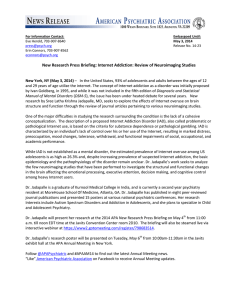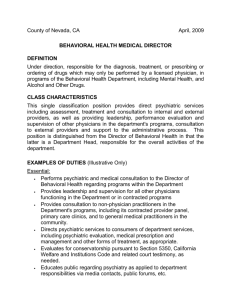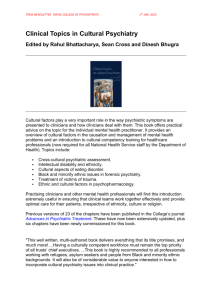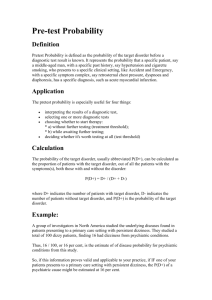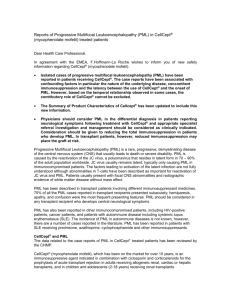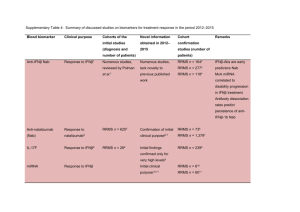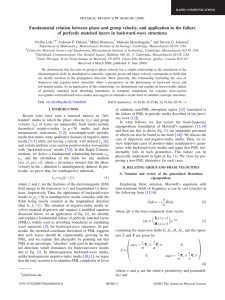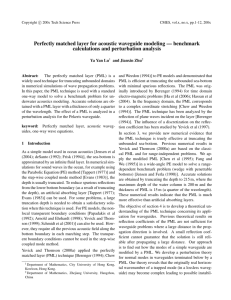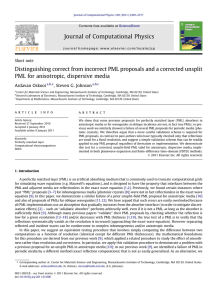Progressive Multifocal Leukoencephalopathy in a Psychiatric Patient
advertisement
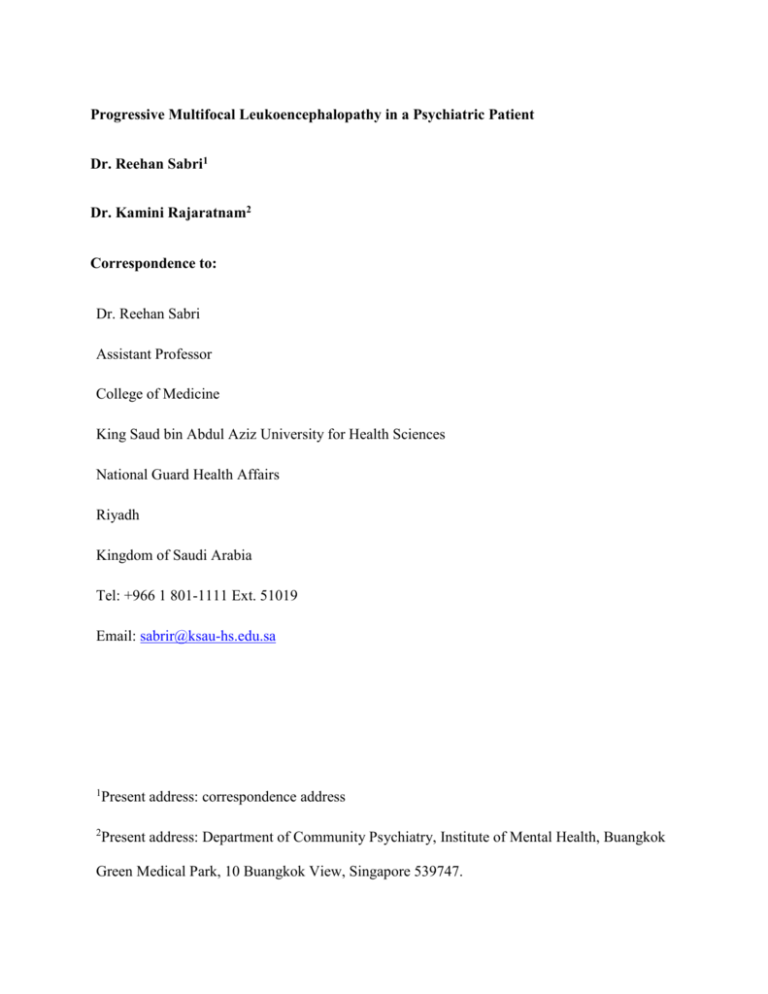
Progressive Multifocal Leukoencephalopathy in a Psychiatric Patient Dr. Reehan Sabri1 Dr. Kamini Rajaratnam2 Correspondence to: Dr. Reehan Sabri Assistant Professor College of Medicine King Saud bin Abdul Aziz University for Health Sciences National Guard Health Affairs Riyadh Kingdom of Saudi Arabia Tel: +966 1 801-1111 Ext. 51019 Email: sabrir@ksau-hs.edu.sa 1 Present address: correspondence address 2 Present address: Department of Community Psychiatry, Institute of Mental Health, Buangkok Green Medical Park, 10 Buangkok View, Singapore 539747. Abstract Progressive Multifocal Leucoencephalopathy (PML) is a demyelinating disorder caused by the reactivation of a latent virus in immunosuppressed individuals (usually as a result of HIV/AIDS). This report highlights the case of a young man with PML who initially apparently presented as psychotic but had in fact developed a delirium followed by rapid global cognitive deficit and eventually a terminal state. The case highlights the uniquely developed multidisciplinary approach of psychiatric services and the increasingly important role of brain imaging technology in psychiatry. Keywords: PML, HIV, AIDS, delirium, psychiatry Introduction Psychiatrists often work at the interface between different medical specialties. We present the tragic case of a young man whose illness necessitated the sequential involvement of several medical specialties but it was Psychiatry which played the pivotal role of diagnosis and coordination of the different disciplines. The case is interesting not just as an unusual clinical presentation but also because it highlights the pioneering role of psychiatry in inter-disciplinary management of patients. Progressive Multifocal Leukoencephalopathy (PML) was first described in the late 1950s in immunocompromised patients. It remained uncommon until the era of Acquired Immunodeficiency Deficiency Syndrome (AIDS) caused by the Human Immunodeficiency Virus (HIV) in the 1980s1. PML is a demyelinating disease caused by widespread viral infection of oligodendrocytes. The virus implicated is the JC Virus which is normally found latent in most people. PML is caused by reactivation of the virus in immunosuppressed individuals2. The overwhelming majority of cases are linked to HIV/AIDS. PML has also been linked to the use of immunosuppressive drugs such as fludarabine and, increasingly, in patients treated with monoclonal antibodies such as natalizumab3. In the case of the latter, the presenting symptoms are often neuropsychiatric in nature4. Clinically, PML causes a rapidly progressive neurological deterioration leading to death within weeks or months5. PML can present with a range of psychiatric symptoms such as delirium, cognitive deficits, psychosis or emotional lability6. Diagnostic investigations include: CT which usually shows multiple bilateral, asymmetrical hypoattenuating foci of various sizes without mass effect or enhancement7; MRI characteristically shows such findings as unifocal or multifocal areas of hyperintensity on T2-weighted images3; viral detection from cerebrospinal fluid; definitive diagnosis is made histologically by brain biopsy which usually shows three key findings: demyelination, enlarged nuclei of oligodendrocytes, and bizarre astrocytes7. The mainstay of treatment for HIV-associated PML is antiretroviral therapy8. Case Report A thirty-six year old Singaporean of Indian ethnicity was brought to the Emergency Department by his distraught wife. She gave a two week history of sexually disinhibited behaviour, diminished self care and irrelevant speech. He had no previous psychiatric or medical history. On examination, he had no neurological deficits and the rest of his physical examination was also unremarkable. Mental state examination revealed a disheveled and distracted gentleman with poor eye contact and rapport. He also had some psychomotor retardation. He was unable to answer questions relevantly; therefore, the history was taken from his wife. His affect was blunted, he denied suicidal thoughts and there was marked thought disorder. He denied perceptual abnormalities and was not oriented in time, place or person. His concentration, registration and long-term memory were impaired. He had no insight into his condition. He was admitted to a psychiatric ward, the admitting doctor thinking perhaps he was faced with an acute psychotic disorder; perhaps even drug-induced. On the psychiatric ward, in-depth assessment revealed a different picture. The history and mental state examination were thought strongly to suggest delirium. Hence, a series of diagnostic investigations was undertaken. Whilst awaiting the results, the patient continued to exhibit the behaviour which prompted his family to bring him to hospital. Blood tests (full blood count, liver, renal and thyroid function tests, calcium/phosphate, B12, folate) revealed no abnormalities. A CT scan of the brain, however, showed: extensive vasogenic oedema crossing the midline raising the possibility of gliomatosis cerebri (a rare primary brain tumour), astrocytoma or lymphoma. Other differentials provided were that of a demyelinating disorder or an infection. Further evaluation with Diffusion-Weighted Magnetic Resonance Imaging, a particularly sensitive Magnetic Resonance Imaging (MRI) technique, was suggested. The MRI showed an infiltrative lesion with perilesional vasogenic and surrounding cytotoxic oedema involving both frontal lobes and the corpus callosum. The patient was transferred to the care of the hospital’s neurosurgeons. He developed a fever and was then referred to an infectious diseases specialist. Blood culture, cerebrospinal fluid analysis and culture proved negative. Finally, stereotactic brain biopsy of the lesion was undertaken; histology confirmed the diagnosis of Progressive Multifocal Leukoencephalopathy secondary to infection with JC Virus. HIV tests were also positive. Antiretroviral therapy was commenced but sadly, the patient’s continued to deteriorate as did his level of consciousness. Finally, the family decided to take him home. He was then taken to a palliative care home in Malaysia and was lost to follow up. Discussion This case demonstrates many important facts. Firstly, the multi- and interdisciplinary mode of caring for a patient in which psychiatry excels and is well-placed to lead in complex cases such as this although PML is not a psychiatric disorder per se. The second important point is a re-affirmation of the validity of the well-known differential diagnosis of an organic brain disorder of non-psychiatric origin whenever a patient presents with an apparent acute psychotic disorder. In this case, despite the high index of suspicion that the patient was experiencing a non-psychiatric organic brain disorder, initial screening failed to reveal the cause so an admission to the psychiatric ward was arranged in order to continue observation and investigations due to the anticipated difficulty in managing the patient’s behaviour on a general medical ward. Thirdly, we have highlighted the increasingly important role of advanced brain imaging technology in psychiatry. To the credit of our institution in Singapore, there was little difficulty in arranging brain scans for this patient. In the twenty-first century, CT and MRI should be considered an essential part of a psychiatrist’s toolkit. However, around the world, especially in less developed and resourced countries, psychiatrists often do not have the use of such investigations as readily. Lastly, despite the great strides made in the treatment of HIV/AIDS, here is a stark reminder of its potentially devastating consequences. PML and other HIV-related disorders are disease entities which psychiatrists are not generally familiar with though HIV/AIDS is highly prevalent throughout the world. In traditional psychiatric teaching and practice, testing for syphilis was considered routine but syphilis with psychiatric manifestations has become a rarity. This case raises the question of whether HIV screening should now replace tests for syphilis in our routine investigations. Declaration of Interest None. References 1. Berger JR. Progressive Multifocal Leukoencephalopathy. Current Neurology and Neuroscience Reports 2007; 7(6): 461-469. 2. Aksamit AJ. Progressive Multifocal Leukoencephalopathy. Current Treatment Options in Neurology 2008; 10(3): 178-185. 3. Brew BJ, Davies NWS, Cinque P, Clifford DB, Nath A. Progressive Multifocal Leukoencephalopathy and other forms of JC virus disease. Nature Reviews Neurology 2010; 6(12): 667-679. 4. Clifford DB, DeLuca A, Simpson DM, Arendt G, Giovannoni G and Nath A. Natalizumab-associated Progressive Multifocal Leukoencephalopathy in Patients with Multiple Sclerosis: Lessons from 28 cases. The Lancet Neurology 2010; 9(4): 438-446. 5. Lishman WA. Organic Psychiatry. 3rd Ed. Oxford: Blackwell Science, 1997. 6. Goldenberg D and Boyle B. Psychiatry and HIV: Part 2. AIDS Reader 2000; 10(4): 201204. 7. Aribandi M and Aribandi AK. Progressive Multifocal Leucodystrophy. October 14 2009. http://emedicine.medscape.com/article/343475-overview (accessed 18 Feb 2010). 8. Kaplan JE, Benson C, Holmes KH, Brooks JT, Pau A, Masur H. Guidelines for prevention and treatment of opportunistic infections in HIV-infected adults and adolescents: recommendations from CDC, the National Institutes of Health and the HIV Medicine Associat. MMWR Recomm Rep. 2009; 58(4); 1-207.
